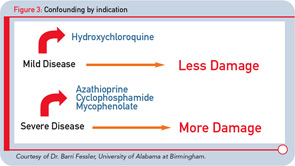The main contributions that the LUMINA cohort has made to advance our knowledge about lupus can be summarized as follows:
1) We have called attention to the seriousness of lupus among Hispanics (primarily of Native American background), which in many ways mirrors the disease observed in African Americans. Of note is the similar frequency of renal disease (62%), which contrasts with the frequency observed among Caucasians and Puerto Rican Hispanics (about 25% to 26%), damage accrual (more rapid accrual and of greater magnitude), disease activity (greater), and survival (diminished). Although it would be easy to ascribe these findings to the presence of ancestral Native American genes among these Hispanic patients, when socioeconomic variables are taken into consideration, some of the differences observed between the ethnic groups can be accounted for by socioeconomic factors.
I hope, therefore, that by focusing attention on the seriousness of lupus among persons of Hispanic descent … we will meet a growing challenge in public health.
In the case of disease activity, ethnicity remains an explanatory variable when examining factors that contribute to disease activity early in the course of the disease but not when examining those that contribute to disease activity over time. In the case of renal disease occurrence, by contrast, ancestral genes and the combination of ancestral genes and socioeconomic factors contribute to the increased predisposition to renal disease observed among Texan Hispanics and African Americans, probably as a result of difficulties in accessing healthcare and lower response rates to currently available therapies. Other observations also support the importance of socioeconomic factors as important modulators of clinical events in lupus; for example, even though adverse pregnancy outcomes were observed more frequently among the Texan Hispanics and the African Americans than among the Caucasians and Puerto Rican Hispanics, it was education (low level) rather than ethnic group the variable that remained in multivariable explanatory models.1
2) We have demonstrated the importance of socioeconomic factors as contributors to survival in lupus. If we examine the most recent mortality data in lupus from the Centers for Disease Control and Prevention, one observes the disparate curves between African-American and white patients (see Figure 1); importantly, the mortality rates for African Americans seem to have increased over the last few years. Unfortunately, no data for Hispanics are noted in this publication. In univariate analyses, we have also shown that the survival curves are quite disparate (see Figure 2), with African Americans and Hispanics from Texas, exhibiting lower survival than the Caucasians and Puerto Rican Hispanics. However, in multivariable analyses (repeatedly conducted over the years), we have shown that it is poverty and not ethnicity that is an independent contributor to a diminished survival (see Table 1).2–5




